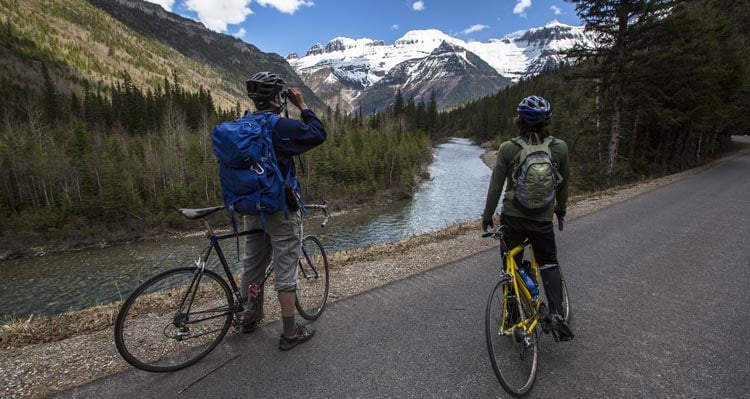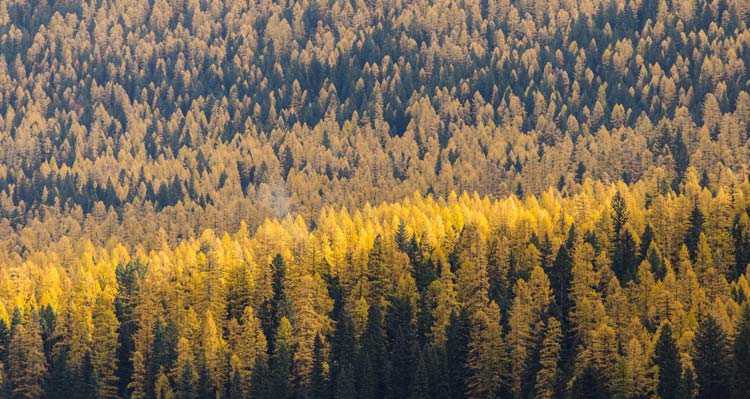Come early or come late—and we're not just talking about mornings and evenings. Peak season in Glacier National Park is usually July 4th through Labor Day, but locals know that the magic of Glacier is found in the early or late seasons. Follow their lead and you’ll witness the spring awakening of over 200 waterfalls, or the parks unforgettable color change each fall.
You’ll catch wildlife waking up in the spring and foraging for winter food in autumn. You’ll see fresh, spring rainbows and speckled golden hillsides when larches change color in the fall. For a visit to remember, it’s worth it to visit Glacier in the early or late seasons.
Locals call it the "shoulder season"—those sweet months between the rush of winter and the bustle of summer.
Here are two activities that you can only do during a shoulder season trip.
The best-kept secret in Glacier is that before cars can drive the road in the summer (while snowplows are still working), the road is open to bicycles only.
This creates a surreal, European atmosphere where people ride down the middle of the road in large groups, chatting as the hill climbs become steeper. Families pedal along with small kids on tiny bikes and athletes train on the steeps. Of course, the weather is questionable—it could rain at any moment—but the unique experience of the park is unmatched.

How to: Properties in and around Glacier National Park open starting in mid-May. From any Glacier Park Collection lodging, ask about the best way to transport bikes to the Avalanche Lake trailhead during the early season. Exact start locations and opening dates vary year to year based on snowpack. Cycling access on the Going-to-the-Sun Road varies from year to year. Be ready for a spontaneous bike ride on your trip.
Glacier National Park features a type of tree that honestly, doesn’t stand out in the summer. The Western Larch (also known as a Tamarack) is a pretty standard pine-like tree... Until autumn comes.
In autumn, the larches turn golden yellow, dotting every mountainside with brilliant color. The park looks mysterious as low rain clouds come and go, and the brilliance of fall meets the quieting of the summer crowds.
Try to go when the Going-to-the-Sun Road is mostly open, and maybe even hike to Hidden Lake or along the Garden Wall. The views during the fall are so very different than the robust, verdant green of July — autumn shows the glorious side of the park that few get to see.

How to: For peak larch season, try to hit up the area in late September through to mid-October. Glacier Park Collection lodges stay open through mid-September and some right through to the end of the month. And if you're fortunate enough to be visiting in beautiful October, base yourself out of Grouse Mountain Lodge in nearby Whitefish. Then, drive the Going-to-the-Sun Road to Logan Pass or as far as it’s open. It might snow or otherwise thwart your plans with inclement weather—it’s Montana, we can’t help it. But if that happens, Whitefish is stocked with autumn glories.
Extended seasons in Glacier give you an inside look at the park without the crowds. From biking down the iconic Going-to-the-Sun Road to Instagramming golden larches, shoulder season can give you an unmatched Glacier experience. Plan your shoulder season trip today—contact our trip specialists to select your Glacier National Park lodging experience and start your adventure.